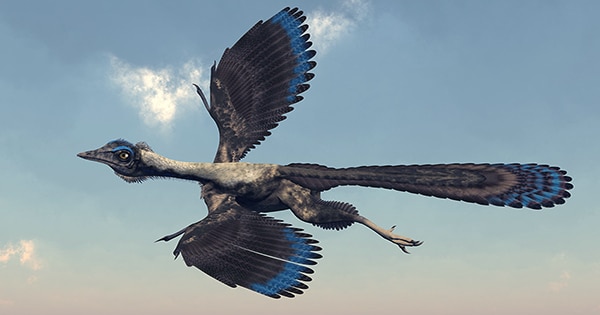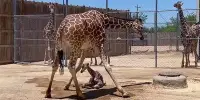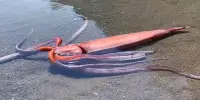Ever consumed chicken feet? You might be astonished to learn that there is actually quite a bit of flesh down there if you haven’t. Scales as well They are excellent engineering feats that are also educational.
I specialize in working with dinosaur skin that has been preserved in fossil form, therefore I have a keen interest in things like bird scales and reptile scales (yes, birds are reptiles too).
In a piece that was just published in Nature Communications, we explain how we exploited some exceptional fossils to show the different lifestyles that existed throughout the transition from dinosaurs that lived on the ground to birds that could fly.
The two groups are very similar because the carnivorous theropod dinosaurs, a group of bipedal dinosaurs distinguished by hollow bones and three-toed feet, eventually evolved into birds.
In order to recreate the behavior and way of life of ancient dinosaurs, we can utilize birds as a model.
Multitasking feet
Birds don’t have “real” hands, so everything they do with their feet—perching, walking, gripping, and manipulating food—takes twice as long. They are perfectly suited to perform those tasks by nature. However, not all bird feet are created equal because the tasks vary depending on the species.
Raptorial birds, such as hawks and falcons, frequently have huge, projecting toe pads that function as little fingers to aid in catching prey. To help restrict their slippery prey, raptorial birds that specialize in catching fish have spiky scales on the underside of their feet.
Crows, sparrows, and other birds have completely different feet that are tailored to the work at hand—or foot—while animals who spend more time on the ground or perching, such as emus and kiwis, have completely different feet.
I had long thought that we might learn more about how some dinosaurs and the first birds behaved or even hunted if we had the correct fossils and could merely look at their feet.
Illuminating scales and feathers
Astonishing fossils of feathered dinosaurs have been discovered in China’s Early Cretaceous rocks for more than 25 years, which date from around 145 million to 100 million years ago.
Numerous species’ fossilized feathers demonstrate how feathers changed over time. Theropods that lived on the ground had basic filaments like hair; pennaraptorans, a group that includes birds and is most closely linked to them, had branching, progressively complex modern-style feathers; and eventually, birds themselves.
But feathers are only half the story
My colleagues Tom Kaye and Michael Pittman from the Foundation for Scientific Advancement and the Chinese University of Hong Kong invented a nearly magical method of photography called laser-stimulated fluorescence back in 2015. (LSF).
By using this technique, it is possible to clearly see details in fossils that are either too small or blurry to be viewed with the human eye. They examined more than 1,000 early avian and dinosaur ancestor fossils using LSF.
They found approximately a dozen fossils that maintained the skin and scales covering the foot in addition to the feathers.
These fossils included dromaeosaurs, or predatory dinosaurs, such as Microraptor and Anchiornis, as well as more traditional-appearing early birds like Sapeornis and Confuciusornis.
We compared what we observed in the fossil birds’ feet to modern birds’ feet, working with my student Nathan Enriquez and Leah Tsang from the Australian Museum, another authority on bird feet.
Pittman and Case Miller, a student, looked at the claws’ sizes and forms in an effort to find more information on their function.
Major surprises
At one end of the scale, we could anticipate that a more bird-like species, like Confuciusornis, would have fewer or no signs of the aerial lifestyle than an animal like Anchiornis, which has feathers but also has a long tail and traits of a ground-based dinosaur.
However, it turned out that just a portion of this was accurate, and there were some major shocks along the road.
Most fascinating was the so-called “four-winged theropod,” Microraptor, a dinosaurian biplane with long flight feathers on its legs and arms.
Given that its feet were nearly identical to those of contemporary hawks, Microraptor may have also been a competent avian hunter capable of catching food “on the flight.” This wasn’t some awkward dinosaur trying to “learn” to fly.
In actuality, a variety of fish, lizards, and mammals have all been discovered preserved in the gut of different Microraptor fossils, supporting the idea that it was an expert airborne hunter.
Anchiornis has hawk-like feet in addition to sharing several characteristics with Microraptor, such as a less advanced “biplane” design. Due to its restricted capacity to fly, it would have taken a more ground-based strategy for hunting.
Confuciusornis and Sapeornis, which were much more like birds, possessed feet that were well suited for perching, but other pieces of evidence suggest that Confuciusornis was a generalist more like a magpie or a chicken.
In contrast, Sapeornis was a thermal soarer that, like certain “herbivorous” vultures, may have eaten meat in addition to its largely herbivorous diet.
It’s simple to picture evolution as “linear” or as having a clear endpoint: a walking dinosaur becomes a feathered dinosaur, and a feathered dinosaur becomes a flying bird. But that’s a clear oversimplification of the truth.
The idea that the first birds were somehow inferior to their contemporary counterparts is false. Our research demonstrates that dinosaurs played a variety of ecological roles, just as birds do now.
Regardless of how skilled they were at flying, they were incredibly well adapted.















